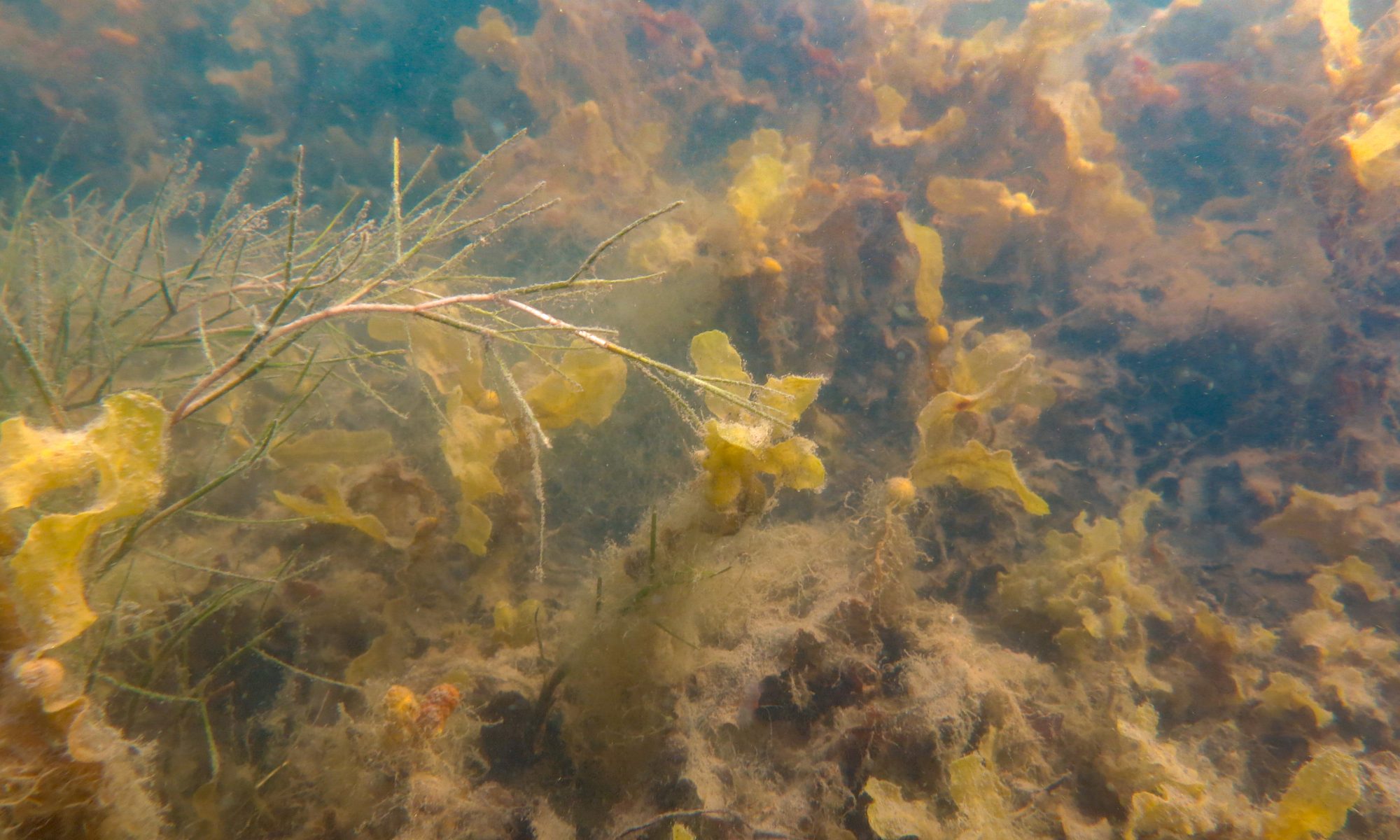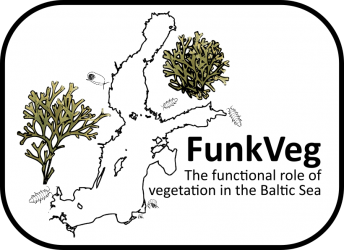Welcome, Tervetuloa or Välkommen to FunkVeg – the role and life of free-living bladderwrack; a Baltic Bridge project. This project involves researchers from both the University of Helsinki and Stockholm University. We will investigate the functional role and method of reproduction of ‘free-living’ bladderwrack that can be found living unattached on soft bottoms in sheltered bays within the Baltic.
Bladderwrack, or Fucus vesiculosus (L.), is one of the major foundation species in the Baltic Sea littoral zone and an integral part of the ecosystem. It is critical for ecosystem function and services, providing shelter and food for many small animals, fish and other algae. The Baltic is a very unique environment, being neither freshwater nor marine, but somewhere in between. This means that both freshwater and marine animals and plants coexist, and struggle to survive in this ecologically marginal environment. Nothing will prepare you for seeing a sand goby and a three-spined stickleback sharing the same space.
As a doctoral student at the University of Helsinki, my research aims to resolve the functional role, reproduction methods and connectivity between populations of ‘free-living’ F. vesiculosus within the Baltic. Very little is known concerning the ecological function and origins of these populations.
Accordingly, through genetic analyses I will provide valuable insights into the population structure and phylogeny of these free-living forms. Additional experimentation will identify optimal growth conditions, stress tolerance, and the link between environmental conditions and phenotype. From this I aim to determine the relationship between genotype and phenotype, and how these effect functionality.
With this page I hope to keep you all updated on my current research, explain some of the technically challenging terminology, and most importantly enlighten everyone to the importance of this quintessentially ‘boring’ brown algae.

